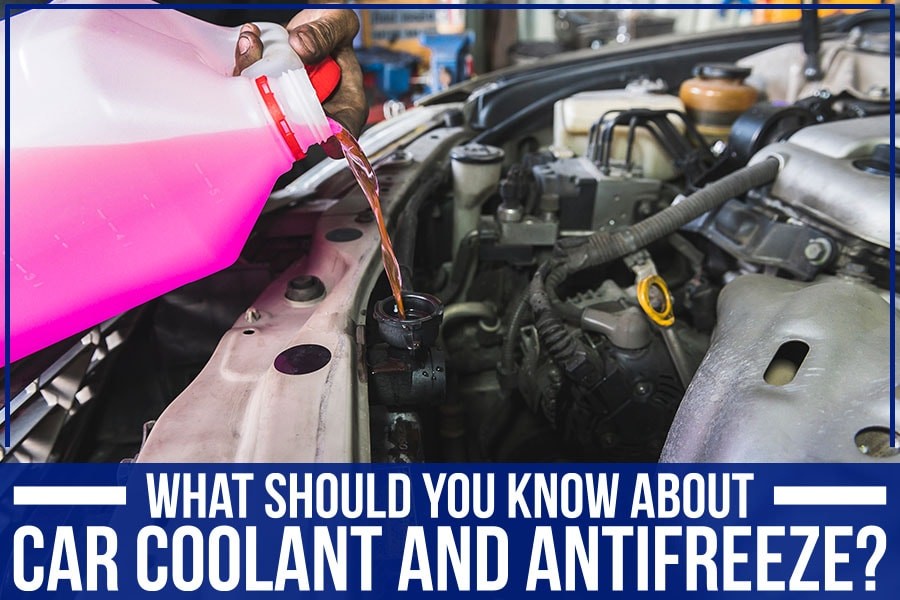Maintaining your car’s engine temperature is crucial for its longevity and performance. Just like humans need to regulate their body temperature, a car engine requires a cooling system to prevent overheating and ensure efficient operation. This is where coolant, often referred to as antifreeze, plays a vital role. This article, brought to you by the automotive experts at cars.edu.vn, will delve into the essential functions of car coolant, clarifying its importance and how it safeguards your vehicle’s engine.
Coolant vs. Antifreeze: Clearing Up the Confusion
While the terms “coolant” and “antifreeze” are frequently used interchangeably, understanding the subtle difference is beneficial. Antifreeze, in its pure form, is typically ethylene glycol or propylene glycol. Its primary function, as the name suggests, is to prevent water-based liquids from freezing in cold temperatures.
Coolant, on the other hand, is a mixture. It’s typically a blend of antifreeze and water, often in a 50/50 ratio. This combination provides a broader range of protection. Antifreeze alone is too viscous to effectively circulate and transfer heat. Water, while an excellent heat conductor, freezes and boils at temperatures common in car engines. Coolant strikes the perfect balance. It not only lowers the freezing point but also raises the boiling point of water, making it suitable for the wide temperature variations an engine experiences. Furthermore, modern coolants are formulated with additives that inhibit rust and corrosion, protecting the engine’s internal components. For most car owners, pre-mixed coolant, readily available at auto parts stores, is the most convenient and reliable option, ensuring the correct proportions of antifreeze and water.
The Cooling Process: How Coolant Works Its Magic
 Engine Coolant Reservoir
Engine Coolant Reservoir
The process of how coolant protects your engine is quite ingenious. As your engine runs, combustion generates significant heat. Coolant is circulated throughout the engine block and cylinder head through channels specifically designed for this purpose. As it flows, it absorbs the excess heat generated by the engine’s operation. The heated coolant then travels to the radiator. The radiator, located at the front of your car, is designed to dissipate heat. Airflow, often enhanced by a fan, passes through the radiator’s fins, cooling the coolant. The now cooler coolant is then recirculated back into the engine to repeat the heat absorption process. This continuous cycle ensures the engine operates at a stable and optimal temperature, preventing overheating and potential damage. Maintaining this temperature is crucial for efficient combustion, reduced wear and tear on engine parts, and overall engine longevity.
Regular Coolant Checks: A Simple Yet Crucial Maintenance Task
Regularly checking your coolant level is a simple preventive maintenance step that can save you from significant engine problems. Ideally, you should check your coolant level at least once a month, or before any long journey. Always ensure the engine is cold before checking, as the coolant system is pressurized when hot, and opening the cap could result in burns.
Locate the coolant overflow reservoir, typically a translucent plastic container near the radiator. It will have “Min” and “Max” or “Full” markings. The coolant level should be between these lines. If the level is consistently low, it indicates a potential leak in the system that needs investigation. When topping off coolant, use the correct type specified in your car’s owner’s manual. Using the wrong type can lead to corrosion and system damage. While topping off with distilled water is acceptable in emergencies, it’s not a long-term solution as it dilutes the antifreeze and corrosion inhibitors in the coolant.
Beyond the level, also visually inspect the coolant itself within the reservoir. Healthy coolant typically has a vibrant color, often green, pink, or yellow, depending on the type. If the coolant appears murky, rusty brown, or contains debris, it’s a sign that the system needs flushing and refilling.
Why Coolant Flush and Fill is Essential Maintenance
Over time, coolant degrades. The additives that prevent corrosion and maintain the coolant’s properties break down. This degradation can lead to several problems: reduced cooling efficiency, corrosion within the system, and the formation of sludge and deposits. These deposits can clog coolant passages, hindering circulation and leading to overheating.
A coolant flush and fill service involves draining the old coolant, flushing the system with a cleaning solution to remove deposits, and then refilling it with fresh coolant of the correct type and mixture. This service is typically recommended every two to five years, or as specified in your vehicle’s maintenance schedule. Regular flushing and filling ensures the coolant system remains clean, efficient, and continues to provide optimal engine protection. While DIY coolant flush kits are available, it’s often recommended to have this service performed by a qualified mechanic to ensure proper disposal of old coolant and correct system refilling.
Consequences of Low Coolant: Engine Overheating and Damage
A low coolant level is a serious issue that can lead to engine overheating, one of the most damaging problems a car can experience. When the coolant level drops too low, it cannot effectively absorb and dissipate heat from the engine. This results in a rapid increase in engine temperature.
Overheating can cause a cascade of problems. It can lead to warping or cracking of the cylinder head and engine block, damage to pistons and valves, and even engine seizure, where the engine components weld themselves together due to extreme heat. These repairs are often very expensive, sometimes exceeding the value of the vehicle. Dashboard temperature gauges are designed to warn drivers of overheating. If your temperature gauge rises into the red zone or a warning light illuminates, pull over immediately in a safe location and turn off the engine to allow it to cool down. Do not attempt to drive further with an overheating engine.
The Dangers of Frozen Coolant: Cracking Engine Blocks
Just as overheating is a threat in hot weather, freezing coolant poses a significant risk in cold climates. If the antifreeze concentration in the coolant is too low, or if plain water is used in the system, the coolant can freeze in sub-zero temperatures.
Water expands when it freezes. If coolant freezes within the engine block, radiator, or hoses, this expansion can exert immense pressure. This pressure can crack the engine block, radiator, or other components, resulting in major and costly damage. Using the correct coolant mixture, especially in regions with freezing temperatures, is vital to prevent coolant from freezing and causing these catastrophic failures.
Key Benefits of Using Car Coolant and Antifreeze
Car coolant provides a multitude of benefits that are essential for maintaining a healthy and reliable vehicle:
- Engine Temperature Regulation: Primarily, coolant prevents overheating by effectively absorbing and dissipating engine heat, ensuring optimal operating temperatures.
- Freeze Protection: Antifreeze component prevents coolant from freezing in cold weather, protecting against cracked engine blocks and related damage.
- Boiling Point Elevation: Coolant raises the boiling point of water, preventing boil-over and steam buildup in hot conditions or under heavy engine load.
- Corrosion and Rust Prevention: Additives in coolant inhibit rust and corrosion within the cooling system, extending the lifespan of engine components, radiator, and hoses.
- Lubrication for Water Pump: Coolant provides lubrication for the water pump, a critical component that circulates coolant throughout the system, reducing wear and tear and extending its life.
- Radiator Cleanliness: Coolant helps keep the radiator clean by preventing the buildup of scale and deposits, ensuring efficient heat transfer.
Signs Your Car Might Need a Coolant Service
Being aware of the warning signs that indicate a potential coolant issue is crucial for proactive car maintenance. Some common indicators include:
- Visible Coolant Leaks: Puddles of brightly colored liquid (green, pink, yellow) under your car, often near the front, are a clear sign of a coolant leak.
- Engine Overheating: The temperature gauge consistently reading high or the engine overheating warning light illuminating are strong indicators of a cooling system problem, often related to low coolant or coolant inefficiency.
- Steam Coming from Under the Hood: Steam escaping from under the hood, especially accompanied by a sweet smell (coolant has a distinct sweet odor), suggests a coolant leak and potential overheating.
- Dirty or Rusty Coolant: Visually inspecting the coolant in the reservoir and noticing a murky, rusty brown color indicates degraded coolant and the need for a flush and fill.
- Sweet Smell Inside the Car: A sweet, maple syrup-like smell inside the car cabin can indicate a heater core leak, which is part of the coolant system.
If you observe any of these signs, it’s best to have your car inspected by a qualified mechanic. Addressing coolant issues promptly can prevent minor problems from escalating into major engine damage.
Johnson Volvo, serving Calvander, NC, offers comprehensive Volvo maintenance services, including coolant system checks and flushes, ensuring your vehicle remains in peak condition. Regular maintenance, including coolant service, is a key aspect of responsible car ownership and helps maximize your vehicle’s lifespan and reliability. Check our Volvo service specials for potential savings on your next maintenance appointment.
